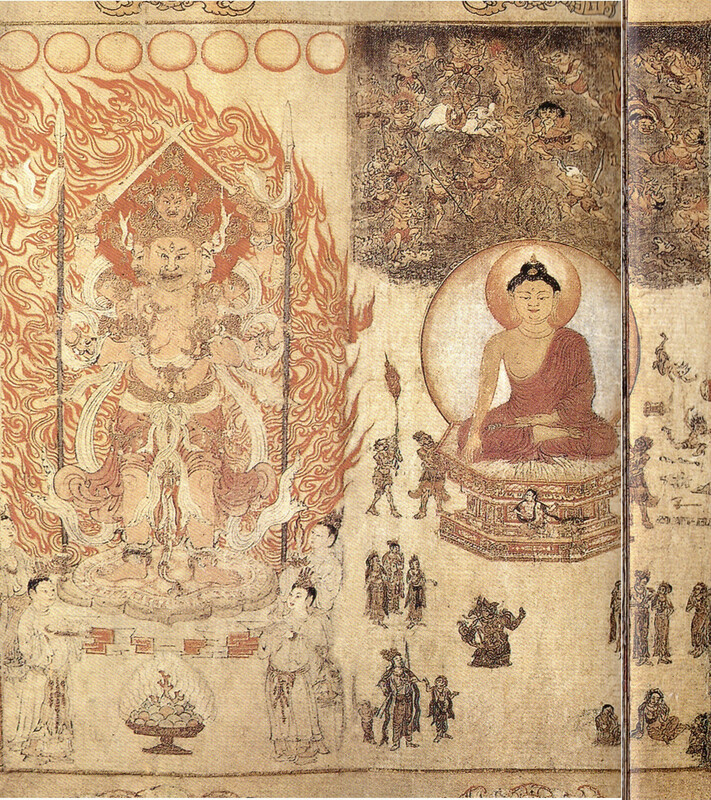The central divinity, given a natural flesh color, has four heads, each with three eyes, and eight arms. A fiery aureole in which are seen birds' heads, surrounds him. The two top hands hold swords crossing to form a V overhead. Each second hand holds a double-ended, clawed vajra; each third, a spear held vertically; while the fourth two are joined in a mudrā. He has two legs and wears snake bracelets and anklets.
He has four attendants, two of whom are: Brahmā, with a conch, he should hold a mirror; and Indra with flowers. In front is a dish containing jewels. |
The temptation of the Buddha by Māra
The scene shows at the top many demons with various kinds of weapons. The Buddha is seated in bhūmisparśa mudrā, making the gesture of calling the Earth to witness, on kusa grass on a throne upheld by two small attendants. The Bodhi Tree is not represented. The Buddha is shown with the rounded bald area at the base of his uṣṇīṣa which is a hallmark of Chinese iconography from late Tang on.
In front, apparently running around on the extension of the base of the throne, is seen a female figure, probably the Earth goddess, whom the Buddha has just called to witness his worthiness. To the right is a torch bearer; to the left, are demons in the act of dropping their weapons and taking to fight.
Below, in the center, Māra, in armor, is seated, writing on the ground. With Māra, are seven ladies, probably his three daughters shown more than once. What looks like a fourth in the upper group on the right is an attendant in an attitude of worship.
Below, to the left, are a man with a bow and two children; to the right, are three seated figures. |



